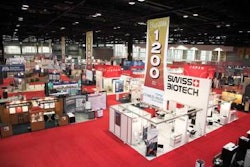“Digital printing is expanding into packaging,” says Jaffe. “And while digital printing can be used legitimately, it is making counterfeiting even easier unless there’s also some kind of element that can’t be printed digitally.”
Jaffe is familiar with high-tech methods used to protect currencies, and she expects these technologies to be adopted into packaging. Many require a detector, that can be used to determine if the material is authentic. Here are some examples:
Quantum dots are materials involving unique manipulation of light that are impossible to reproduce. Magnetic dots involve magnetic black inks that can contain information that can be read by specialized instruments. Lenticular images permit multiple images to be seen, giving the illusion of movement or morphing of images into one another. Technology from one vendor, HumanEyes (www.humaneyes.com), permits these images to be printed with ordinary ink-jet printers run by its software and may be directly applicable for packaging. Micro bar codes are the micro- or nano-scale equivalent of conventional bar codes. These use particles that are made by placing a pattern of materials that can be readable such as using fluorescence materials, amino acids, or metals. These are embedded into the material to be protected. They’re invisible, scalable, highly robust, and machine readable. Security threads are embedded in the packaging material. They can be made of alternate materials such as metal or plastic, can be carriers of detectable fluorescent or UV materials, and can be printed on to carry additional information. This gives an integrated system with multiple levels of security.
Nanotext refers to tiny text that can be read using a magnifying glass or, in some instances, a microscope.Other specialized inks with additives make the ink respond to ultraviolet or infrared portions of the spectrum.
These also include iridescent and fluorescent inks.
“When you incorporate one or more of these security technologies into a packaging substrate, you’re already starting to get layers of protection,”
Jaffe concludes.
See the story that goes with this sidebar:KEYS to package security


























